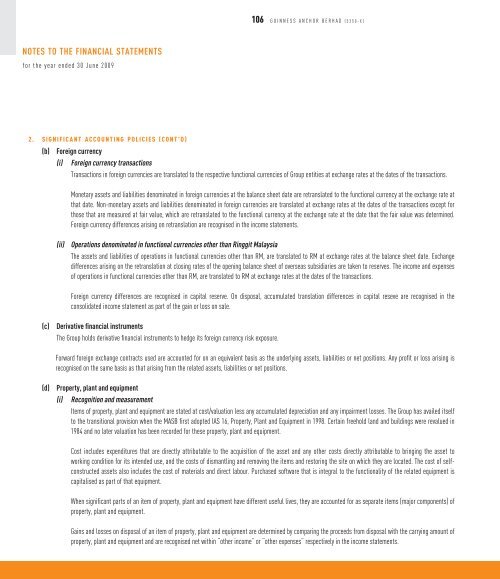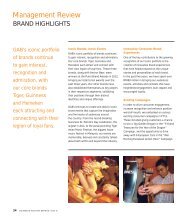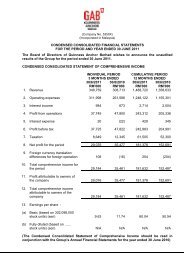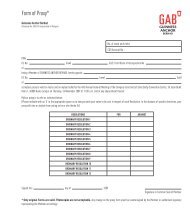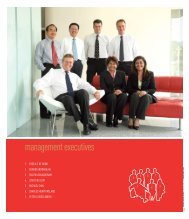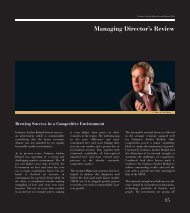Full Version Guinness Anchor Berhad Annual Report 2009 - Gab
Full Version Guinness Anchor Berhad Annual Report 2009 - Gab
Full Version Guinness Anchor Berhad Annual Report 2009 - Gab
Create successful ePaper yourself
Turn your PDF publications into a flip-book with our unique Google optimized e-Paper software.
106 GUINNESS ANCHOR BERHAD (5350-X)<br />
NOTES TO THE FINANCIAL STATEMENTS<br />
for the year ended 30 June <strong>2009</strong><br />
2. SIGNIFICANT ACCOUNTING POLICIES (CONT’D)<br />
(b) Foreign currency<br />
(i) Foreign currency transactions<br />
Transactions in foreign currencies are translated to the respective functional currencies of Group entities at exchange rates at the dates of the transactions.<br />
Monetary assets and liabilities denominated in foreign currencies at the balance sheet date are retranslated to the functional currency at the exchange rate at<br />
that date. Non-monetary assets and liabilities denominated in foreign currencies are translated at exchange rates at the dates of the transactions except for<br />
those that are measured at fair value, which are retranslated to the functional currency at the exchange rate at the date that the fair value was determined.<br />
Foreign currency differences arising on retranslation are recognised in the income statements.<br />
(ii)<br />
Operations denominated in functional currencies other than Ringgit Malaysia<br />
The assets and liabilities of operations in functional currencies other than RM, are translated to RM at exchange rates at the balance sheet date. Exchange<br />
differences arising on the retranslation at closing rates of the opening balance sheet of overseas subsidiaries are taken to reserves. The income and expenses<br />
of operations in functional currencies other than RM, are translated to RM at exchange rates at the dates of the transactions.<br />
Foreign currency differences are recognised in capital reserve. On disposal, accumulated translation differences in capital reseve are recognised in the<br />
consolidated income statement as part of the gain or loss on sale.<br />
(c)<br />
Derivative financial instruments<br />
The Group holds derivative financial instruments to hedge its foreign currency risk exposure.<br />
Forward foreign exchange contracts used are accounted for on an equivalent basis as the underlying assets, liabilities or net positions. Any profit or loss arising is<br />
recognised on the same basis as that arising from the related assets, liabilities or net positions.<br />
(d)<br />
Property, plant and equipment<br />
(i) Recognition and measurement<br />
Items of property, plant and equipment are stated at cost/valuation less any accumulated depreciation and any impairment losses. The Group has availed itself<br />
to the transitional provision when the MASB first adopted IAS 16, Property, Plant and Equipment in 1998. Certain freehold land and buildings were revalued in<br />
1984 and no later valuation has been recorded for these property, plant and equipment.<br />
Cost includes expenditures that are directly attributable to the acquisition of the asset and any other costs directly attributable to bringing the asset to<br />
working condition for its intended use, and the costs of dismantling and removing the items and restoring the site on which they are located. The cost of selfconstructed<br />
assets also includes the cost of materials and direct labour. Purchased software that is integral to the functionality of the related equipment is<br />
capitalised as part of that equipment.<br />
When significant parts of an item of property, plant and equipment have different useful lives, they are accounted for as separate items (major components) of<br />
property, plant and equipment.<br />
Gains and losses on disposal of an item of property, plant and equipment are determined by comparing the proceeds from disposal with the carrying amount of<br />
property, plant and equipment and are recognised net within “other income” or “other expenses” respectively in the income statements.


